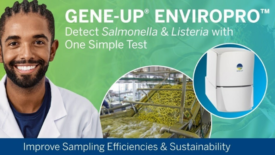Home » Keywords: » PCR
Items Tagged with 'PCR'
ARTICLES
Monitoring All Salmonella Serovars in Poultry Production by Applying an Integrated Approach of PCR and HTS
Monitoring all Salmonella serovars is important to establish a complete epidemiological picture and prevent foodborne illness
June 1, 2023
Food Safety Testing Continues to Increase
Processors plan more testing—but only some analytical methods show growth
June 17, 2021
Never miss the latest news and trends driving the food safety industry
eNewsletter | Website | eMagazine
JOIN TODAY!Copyright ©2024. All Rights Reserved BNP Media.
Design, CMS, Hosting & Web Development :: ePublishing








